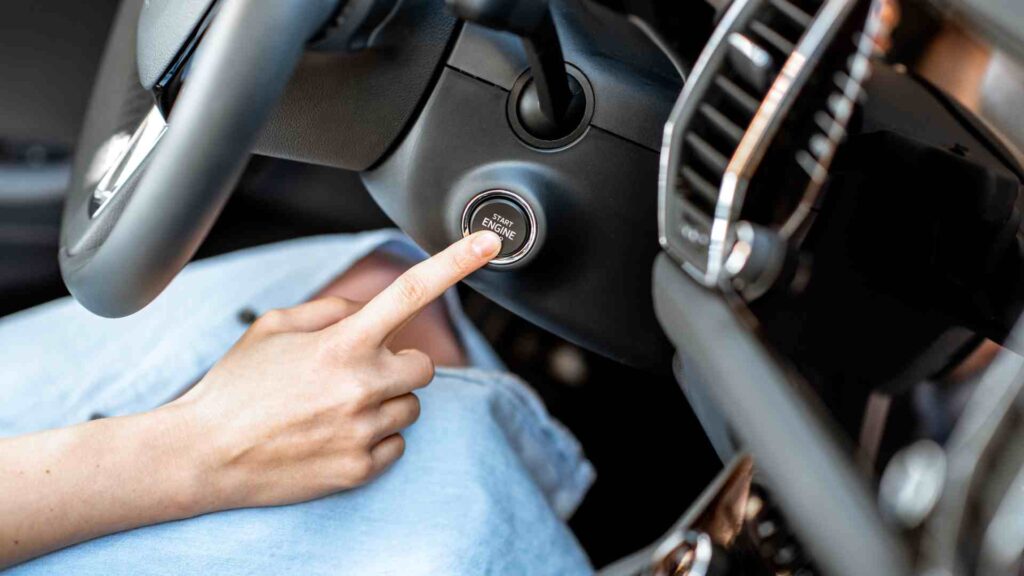Car Auto Start-Stop Not Working? 8 Reasons Why Your System Might Be Failing
The auto start-stop feature in vehicles promises to enhance fuel efficiency and reduce emissions by turning off the engine while it’s idle and resuming it when you’re ready to drive again. While this technology can significantly benefit the environment and your wallet, it can also lead to frustration when it fails to operate as intended.
Have you ever wondered, “Why is my auto start-stop not working?” If so, you are not alone. In this article, we’ll delve into eight common reasons your car’s start-stop system might be malfunctioning, how to diagnose the issue, and whether you should consider disabling this feature altogether.
Car Auto Start-Stop Not Working? 8 Reasons Your System Might Be Failing

Why Is Your Auto Start-Stop Not Working? 8 Reasons Why Your System Might Be Failing
The auto start-stop feature is an effective technology that improves fuel efficiency and reduces pollution by automatically turning off the engine while the vehicle is parked and resuming it when you are ready to drive.
However, when this system fails to engage, it can be frustrating and perplexing for drivers. Here are eight main reasons why your auto start-stop system might not be working, providing insight into potential issues and helping you understand how to address them.
Battery Health Issues
The performance of the auto start-stop system is heavily dependent on the health of your vehicle’s battery. A weak or aging battery may not have the capacity to support the system, especially during frequent stops. If your battery voltage is low, the system will disable itself to prevent further drain. Regularly testing your battery’s health and replacing it when necessary is key to maintaining the functionality of the start-stop feature.
Temperature Conditions
Extreme weather can significantly impact the auto start-stop system’s operation. Cold temperatures can prevent the engine from reaching optimal operating conditions quickly, making it less likely for the system to engage. Similarly, excessive heat can increase demands on the air conditioning system, causing the start-stop feature to deactivate. If you notice that the system fails more frequently during certain weather conditions, temperature might be a contributing factor.
Engine Performance Problems
Failures of the auto start-stop system might be caused by an underperforming engine. Misfires, poor fuel delivery, or a restricted air intake might cause the engine to struggle to restart, causing the system to turn off. Regular engine maintenance, such as changing spark plugs, fuel filters, and air filters, will help your engine perform smoothly and meet the requirements of the start-stop system.
Transmission Troubles
The relationship between the auto start-stop system and the vehicle’s transmission is critical. If the transmission is experiencing problems, such as low fluid levels or mechanical failures, it can interfere with the system’s ability to engage and disengage effectively. Keeping the transmission in good condition through regular maintenance and inspections can help prevent system failures.
Faulty Sensors
The auto start-stop system relies on various sensors to determine when to engage and disengage the engine. These sensors monitor factors like vehicle speed, brake pedal position, and engine temperature. If any of these sensors malfunction or transmit inaccurate signals to the vehicle’s computer, the start-stop feature may not work. Regular inspections of these sensors can help uncover problems before they cause system failure.
Electrical System Malfunctions
The auto start-stop functionality relies heavily on the vehicle’s electrical system for its operation. Blown fuses, broken wiring, or problems with the vehicle’s control module can all cause the system to malfunction. If the vehicle’s computer detects any issues with the electrical system, it may disable the auto start-stop function to avoid further hassles. The start-stop feature cannot function properly unless the electrical system is in good condition.
Driver Settings
Many current automobiles allow drivers to directly disable the auto start-stop feature through the dashboard settings. If this functionality is turned off, the system will not function. It’s important to become familiar with the vehicle’s settings and ensure that the start-stop function is activated. In some cases, a simple check of the settings can resolve the issue.
Software Issues
Modern vehicles are equipped with complex software systems that control various functions, including the auto start-stop system. If the software is outdated or has glitches, it can affect the performance of the start-stop feature. Regular software updates and maintenance checks can help ensure that the system operates correctly and efficiently. If you suspect software problems, you may need to visit a specialist for a diagnosis.
How to Diagnose a Malfunctioning Automatic Start-Stop System
Diagnosing a faulty automatic start-stop system may seem tricky, but breaking it down into structured steps can help you pinpoint issues effectively. Here’s a step-by-step guide to diagnosing issues with your vehicle’s auto start-stop system, guaranteeing that you can quickly detect and resolve any problems.
Initial Observation
Start your diagnosis by observing the conditions under which the start-stop system fails to engage. Pay attention to the following:
- Does it happen under specific conditions, such as during heavy traffic or after prolonged idling?
- Are there specific weather conditions (extreme heat or cold) when the system consistently does not work?
- Consider whether your driving habits may influence the feature’s operation, such as frequent short trips that prevent the engine from reaching optimal temperature.
Check the Dashboard Indicators
Most modern vehicles come equipped with a dashboard warning system that can provide insights into potential issues. Look for:
Warning Lights: Check if any warning lights related to the engine, battery, or electrical systems are illuminated. A malfunctioning auto start-stop system may trigger these indicators.
System Messages: Some vehicles display messages regarding the status of the start-stop feature. If you see notifications about system availability, take note of them for further investigation.
Battery Voltage Test
While battery health has been mentioned previously, testing the voltage at this stage is crucial for diagnosing a malfunctioning system. Use a multimeter to measure the battery voltage while the vehicle is off. A reading below 12.4 volts indicates that the battery may be underperforming.
Load Testing: If you suspect battery issues, conduct a load test to see how the battery performs under stress. Many auto parts stores offer free load testing services.
Inspect Electrical Connections
A thorough visual inspection of the vehicle’s electrical connections can reveal potential issues. Look for:
Loose or Corroded Connections: Check battery terminals, fuses, and wiring harnesses for corrosion or loose connections that might disrupt the power supply.
Damaged Wires: Inspect the wiring for any signs of fraying or damage, which could affect the auto start-stop system’s functionality.
Use an OBD-II Scanner
Utilizing an On-Board Diagnostics (OBD-II) scanner can provide valuable information about any fault codes associated with the auto start-stop system.
Read Error Codes: Plug in the scanner and check for any Diagnostic Trouble Codes (DTCs) that may indicate specific problems with the start-stop system or any other related components.
Clear Codes: If you find error codes, clear them and take the vehicle for a test drive. If the codes reappear, you’ll have a clearer idea of where to focus your troubleshooting efforts.
Sensor Functionality Check
Given that the start-stop system relies on various sensors for operation, it’s essential to check their functionality:
Brake Pedal Switch: This switch is crucial for the system to know when the vehicle is stopped. Test the switch to ensure it’s functioning correctly and sending signals to the vehicle’s computer.
Vehicle Speed Sensor: Verify that the speed sensor is reporting accurate data. If it malfunctions, the system may assume the vehicle is in motion and not engaged.
Evaluate Engine Performance
A well-functioning engine is critical for the start-stop system to operate smoothly. Perform the following checks:
Listen for Unusual Sounds: While the engine is running, listen for any odd noises that might indicate mechanical issues.
Check for Fluid Leaks: Inspect under the vehicle for signs of fluid leaks, which could indicate engine or transmission issues that might affect performance.
Conduct a Test Drive
After conducting your checks, take the vehicle for a test drive under various conditions:
Watch for Activation: Pay attention to whether the auto start-stop system engages as expected. Note any patterns, such as whether it works in some situations but not others.
Document Your Findings: Keep a record of your observations during the test drive, as this information can be helpful if you decide to consult a professional technician.
Consult Professional Help if Necessary
If you’ve gone through the diagnostic process and still cannot pinpoint the issue, it may be time to consult a professional technician.
Expert Diagnostics: A qualified technician will have access to advanced diagnostic tools and software, allowing for a more thorough assessment of your vehicle’s systems.
Comprehensive Repair Options: Professionals can offer insights into necessary repairs or adjustments to restore the auto start-stop system to full functionality.
A defective automatic start-stop system can be diagnosed by observation and testing, and maybe some professional assistance. Regular maintenance and attention to detail can help keep your car running smoothly, improving your driving experience and allowing you to make use of the auto start-stop feature.
When your vehicle’s auto start-stop system fails, basic repairs frequently give temporary relief but do not address the fundamental problems. At YST Auto Service, we specialize in advanced diagnostics, precision repairs, and proactive maintenance tailored to the specific needs of modern start-stop technology. Keep in mind that your car is a major investment, so consider taking your car to YST Auto Service for a regular car maintenance service. YST Auto Service is your one-stop destination auto repair garage in Mississauga, Toronto. Our professional mechanics can identify potential issues and ensure your vehicle is ready for the changing season.
At YST Auto Service, we deliver only the highest quality car services and repairs. We provide all manner of auto repair and car maintenance services to keep your vehicle running strong and smooth. From keeping proper tire traction to ensuring your battery is up to the task, we will help you enjoy the drive with confidence and comfort.





